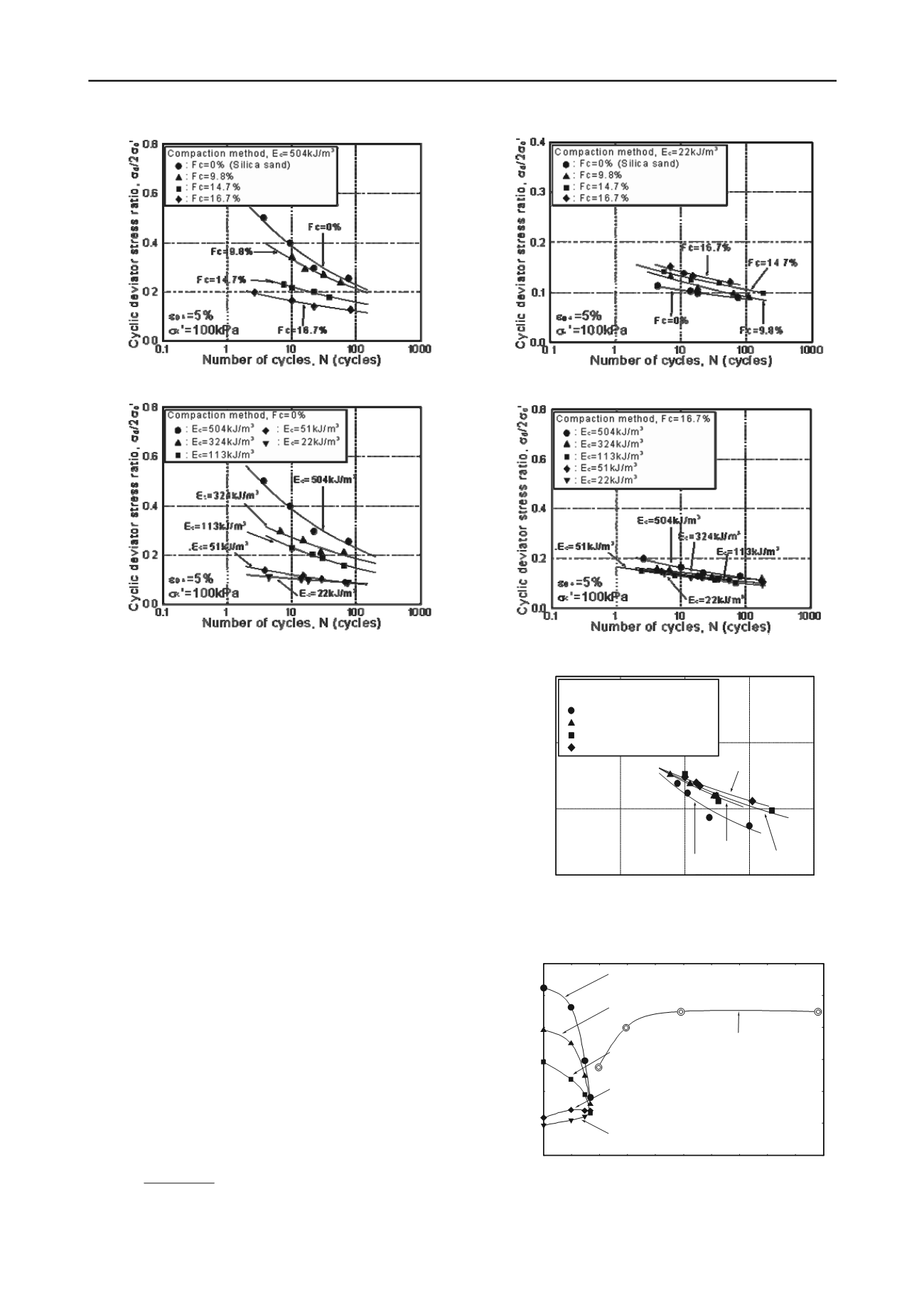
1553
Technical Committee 203 /
Comité technique 203
(a)
E
c
=504kJ/m
3
(at constant compaction energy)
(b)
E
c
=22kJ/m
3
(at constant compaction energy)
(d)
F
c
=16.7% (at constant fines content)
(c)
F
c
=0% (at constant fines content)
0.1
1
10
100
1000
0.0
0.2
0.4
0.6
content is high, resulting in an increase in density of the
specimen leading to an increase in cyclic strength.
4 RELATIONSHIP BETWEEN SKELETAL STRUCTURE
AND CYCLIC SHEAR STRENGTH
Based on the results of the cyclic shear tests discussed above, it
can be summarised that the fines content and the resulting
skeletal structure have significant effects on the cyclic strength
of clay-sand mixtures. By assigning different values of b, the
void ratios are re-calculated. From the results, a
b
value of 0.3
indicates that almost all the data falls into a narrow band that
surrounds the data for clean sand (
F
c
=0%), as illustrated in Fig.
5. This observation suggests that for
F
c
<20%, the effect of fines
on the cyclic shear strength is about 30% of that of sand for
Iwakuni clay.
5 EVALUATION OF LIQUEFACTION RESISTANCE BY
EQUIVALENT GRANULAR VOID RATIO
It is widely known that soil density has significant effects on the
engineering properties of sandy soils. Due to the effects of the
size and shape of soil particles and uniformity, however, the
compactness of sandy soils can not be evaluated reasonably
only by the in-site dry density. Relative density is computed
from the maximum and minimum void ratios (dry densities) and
in-site void ratio (dry density). The maximum and minimum dry
void ratio are determined according to a standardized method
(for example, ASTM D4253 and D4254, JIS A 1224). However,
it can only be applied to a small fine (
F
c
<5%) sandy soil. In Fig.
6, the relationship between equivalent granular relative density
and
R
L(N=20)
was illustrated for all the soil mixtures used. The
equivalent granular relative density
D
rge
, is defined as:
(4)
Fig. 3.
Cyclic shear strength curves
Fig. 4
Correspond to constant compaction energy and pre-
consolidation specimens
(e)
F
c
=19.6~98.0% (pre-consolidation specimen)
Cyclic deviator stress ratio,
d
/2
c
'
Number of cycles, N (cycles)
DA
=5%
c
'=100kPa
Pre-consolidation method
Vertical stress,
v
=50kPa
: Fc=19.6%
: Fc=29.4%
: Fc=49.0%
: Fc=98.0% (Iwakuni Clay)
Fc=19.6%
Fc=29.4%
Fc=49.0%
Fc=98.0%
0 10 20 30 40 50 60 70 80 90 100
0.05
0.10
0.15
0.20
0.25
0.30
0.35
Cyclic deviator stress ratio, R
L(N=20)
Fines content, Fc(%)
E
c
=504kJ/m
3
E
c
=324kJ/m
3
E
c
=113kJ/m
3
E
c
=51kJ/m
3
E
c
=22kJ/m
3
Pre-consolidation
method(
σ
v
=50kPa)
(%)
0
in
D
10
m
max
max
g
g
ge
g
rge
e
e
e
e


